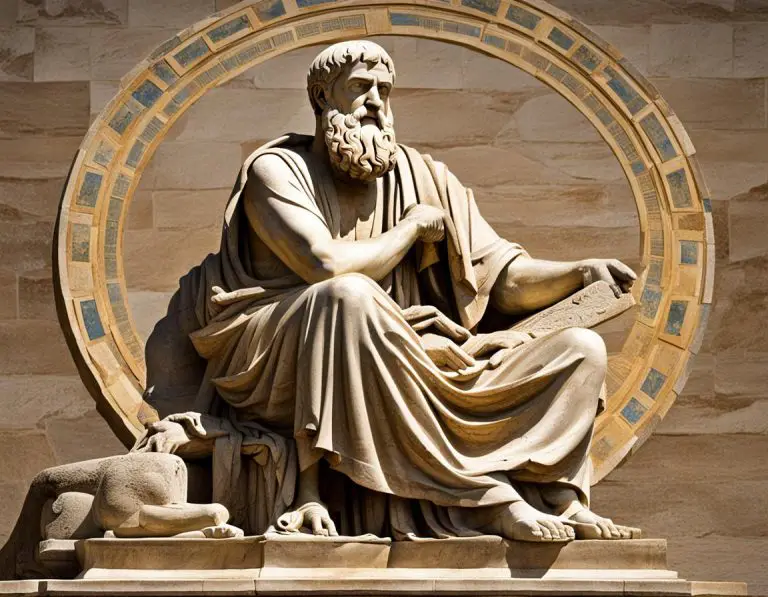Overview of Plato’s Theory of Forms
Plato’s Theory of Forms is one of the foundational aspects of his philosophical framework. At the core of this theory lies the idea that the material world we perceive through our senses is merely a shadow or imperfect reflection of a higher reality of Forms. These Forms, according to Plato, are eternal, unchanging, and perfect entities that exist outside the physical realm.
By distinguishing between the physical world and the world of Forms, Plato aimed to address fundamental questions about the nature of reality and knowledge. The Forms serve as the ultimate source of truth and knowledge, as they represent the ideal versions of concepts such as beauty, justice, and truth. Through contemplation and philosophical inquiry, individuals can access these Forms and attain a deeper understanding of the true nature of reality, according to Plato’s Theory of Forms.
Definition and Origins of Forms
In Plato’s Theory of Forms, Forms are the eternal, unchanging, and perfect archetypes that exist beyond the physical world. These Forms represent the true reality, while the material world is a mere reflection or imperfect copy of these transcendent Forms. According to Plato, the physical world is fleeting and imperfect, whereas the Forms are eternal and immutable.
The origins of Forms can be traced back to Plato’s belief that the material world is constantly changing and filled with imperfections. To Plato, the world of Forms is the realm of ultimate truth and perfection, where concepts such as beauty, justice, and goodness exist in their purest form. By contemplating these Forms through reason and intellect, one can gain a deeper understanding of reality and attain true knowledge.
Dualism in Plato’s Philosophy
Dualism is a foundational concept in Plato’s philosophy, dividing reality into two distinct realms: the physical world of appearances and the metaphysical world of Forms. According to Plato, the material world is impermanent, changing, and subjective, while the world of Forms is eternal, unchanging, and objective. This duality sets the stage for understanding the nature of reality and the relationship between the tangible world we perceive with our senses and the higher realm of abstract Forms.
In Plato’s dualistic framework, the physical world is considered a mere shadow or imperfect reflection of the world of Forms. The Forms represent the true reality, existing independently of human perception and providing the ultimate source of knowledge and truth. Through reason, contemplation, and philosophical inquiry, individuals can strive to grasp the essence of these Forms and attain a deeper understanding of the nature of reality beyond the material realm.
Relationship Between the Material World and the World of Forms
In Plato’s Theory of Forms, the relationship between the material world and the world of Forms is a central concept that sheds light on the nature of reality. According to Plato, the material world is merely a shadow or imperfect reflection of the perfect and unchanging Forms that exist in a separate realm. This means that while the material world is characterized by imperfection, decay, and change, the world of Forms is eternal, immutable, and consists of pure and perfect essences.
Plato believed that the material world is in a constant state of flux and that true knowledge can only be gained by contemplating the Forms. By looking beyond the physical realm and contemplating the Forms, individuals can uncover universal truths and gain a deeper understanding of reality. This shift in focus from the material world to the world of Forms is essential for achieving wisdom and enlightenment in Plato’s philosophy, as it allows individuals to transcend the limitations of the senses and access a higher form of knowledge.
The Role of Knowledge in Plato’s Theory
Knowledge plays a fundamental role in Plato’s Theory of Forms, as it is through knowledge that individuals can grasp the true nature of reality. In Plato’s view, knowledge is not obtained through the senses, but rather through reason and intellect. He believed that the physical world is merely a shadow or imperfect reflection of the true reality that exists in the realm of Forms. This emphasizes the importance of intellectual inquiry and contemplation in gaining a deeper understanding of the world around us.
For Plato, the ultimate form of knowledge is the understanding of the Form of the Good. The Form of the Good is the highest form in the hierarchy of Forms and represents the source of all reality and truth. Through contemplation and philosophical reflection, individuals can attain knowledge of the Form of the Good, which in turn allows them to discern the true nature of reality and make moral decisions based on this knowledge. Plato believed that those who possess knowledge of the Form of the Good are best equipped to lead virtuous lives and contribute positively to society.
Understanding the Form of the Good
The pinnacle of Plato’s Theory of Forms lies in the notion of the Form of the Good. This ultimate Form is the source of all other Forms and provides the highest standard of knowledge and reality. For Plato, understanding the Form of the Good is essential for achieving true wisdom and virtue. It serves as the guiding principle that illuminates all other Forms, allowing individuals to discern between truth and illusion in the material world.
The Form of the Good is described as the ultimate object of knowledge, representing the pinnacle of moral excellence and inherent goodness. Through contemplation and philosophical inquiry, individuals can come to grasp this Form and align their actions with its supreme standards. Ultimately, according to Plato, those who attain a deep understanding of the Form of the Good are best equipped to lead a just and fulfilling life, transcending the imperfections of the material realm.
Related Links
What is the significance of The Philosopher King in Plato’s philosophy
How to interpret The Allegory of the Cave in Plato’s philosophy
